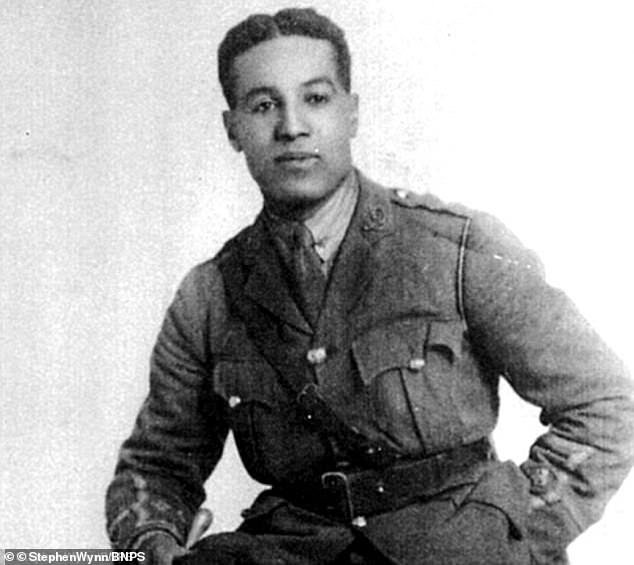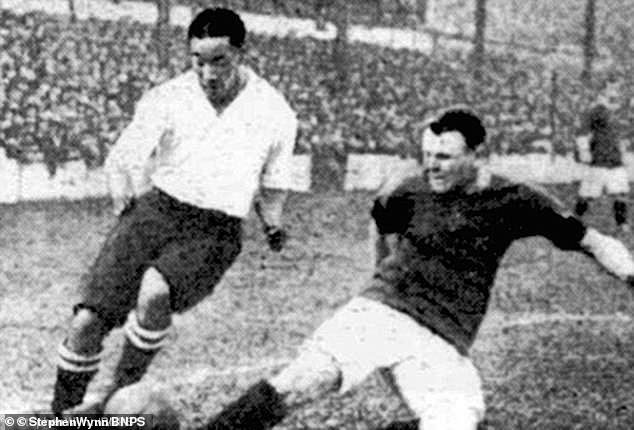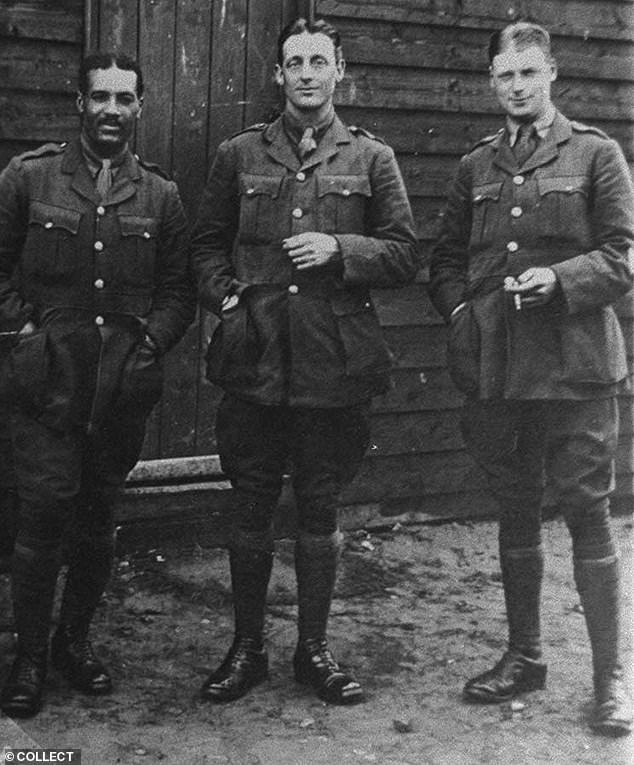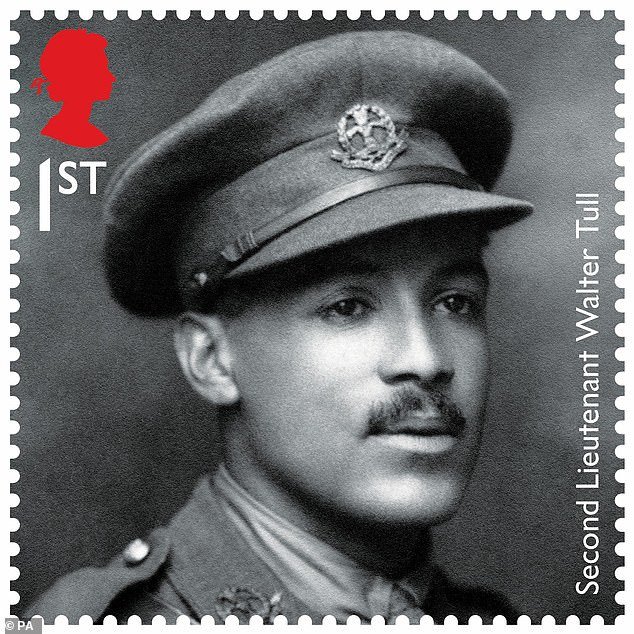Tull was killed fighting in the Great War in 1918 and expert Andy Robertshaw has said he believes he is now buried at the Héninel-Croisilles Road cemetery near Lille in northern France.
A historian has claimed he has identified the grave of Walter Tull - one of the British Army's first black officers.
Tull was killed fighting in the Great War in 1918 and expert Andy Robertshaw has said he believes he is now buried at the Héninel-Croisilles Road cemetery near Lille in northern France.
Speaking on the Amazing War Stories podcast, the historian said that Tull - who was an ex-Tottenham Hotspur footballer - was probably originally buried alongside other casualties from his unit in a shell hole made by the Germans.

A historian has claimed he has identified the grave of Walter Tull (pictured) - one of the British Army's first black officers
The headstone in the cemetery carries the badge of his regiment.
It comes as last month the discovery of a war plaque revealed Tull was not the first black British Army officer as many had believed but it was in fact Lieutenant Euan Lucie-Smith who had joined up three years before.
Mr Robertshaw studied the war diary of Tull's unit, eyewitness accounts, historic maps and records of the Imperial War Graves Commission to make his assessment of where his grave might be.

Ex-Tottenham Hotspur footballer Tull was killed fighting in the Great War in 1918 and now expert Andy Robertshaw has said he believes he is now buried at the Héninel-Croisilles Road cemetery near Lille in northern France
He said that, in the spring of 1920, 14 bodies of men of the 23rd Middlesex were recovered together in a location after it withdrew on the day of Tull's death.
The site is half a mile east of where the battalion's headquarters at Biefvillers-lès-Bapaume had been overrun and its commander, Lieutenant-Colonel Alan Haig-Brown, another former Spurs player, was killed earlier in the day.
Attempts by Tull's men to recover his body failed and the men who saw him fall said he was in the open and they had to retreat to cover.

Tull (left) - who died during the war in 1918 - is pictured with two other members of his regiment
Mr Robertshaw added that the sunken lanes close to where the bodies were found would have been ideal for this purpose.
He said the bodies appeared to be those of most of the men of Tull's battalion who were killed after the headquarters were overrun.
He said: 'It is probable that Tull lies with his comrades in the cemetery at Croisilles with a headstone that states 'Known unto God' and is identified by his regiment - that would be key to him and to any soldier.'

Tull - who was born in Kent to a Barbadian father and an English mother - spent part of his childhood in an orphanage and signed for Tottenham Hotspur, aged 21 in 1909.
But his career was cut short when war started in 1914 and he joined the newly formed 17th (Football) Battalion, Middlesex Regiment - known as the Pal's Battalion.
Despite the racist abuse he had suffered as a footballer, he quickly rose through the ranks to become an officer, dying a hero's death on the battlefields before being remembered on a First World War centenary stamp in 2018.
Duncan Finlayson, a retired teacher in Ross-shire and Tull's great-nephew, said that he was 'immensely proud' of what Tull achieved and plans to visit the cemetery.
'He's commemorated on a memorial wall in Arras with 35,000 others, so we just accepted that. It's a nice thought he might have a headstone even if it doesn't name him,' he told The Times.















